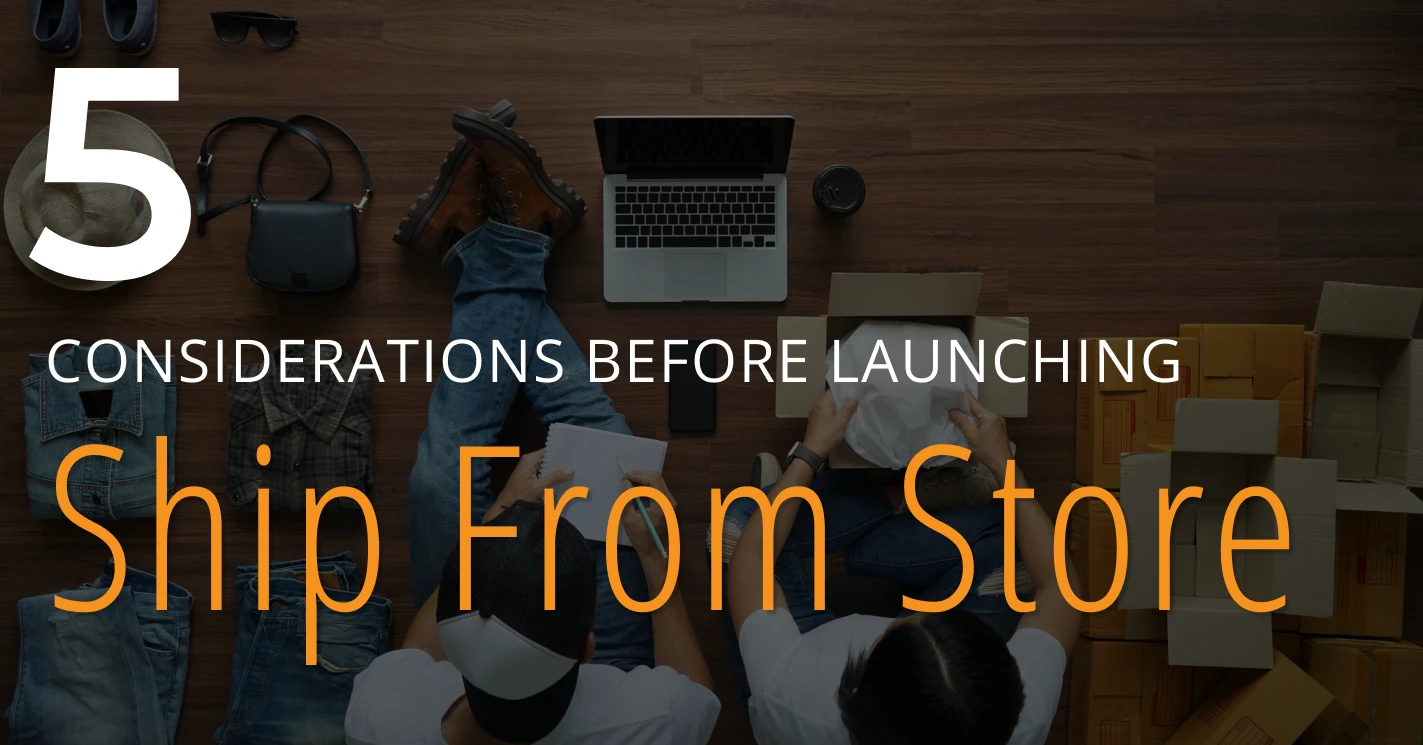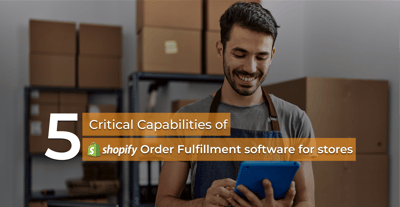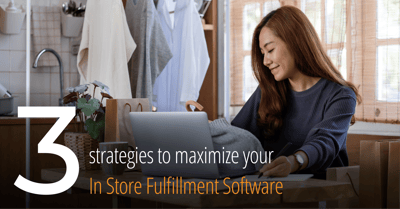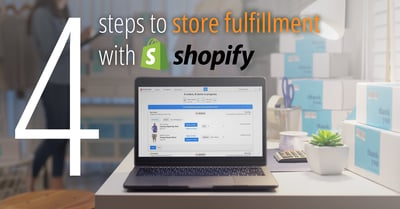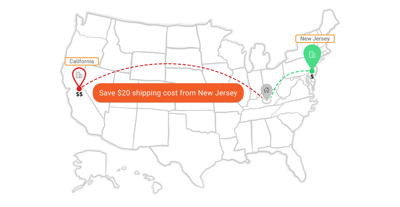Today’s customers aren’t satisfied with standard delivery. Modern customers are demanding more options, including BOPIS and same-day delivery via Ship From Store.
Omnichannel retailing is becoming increasingly popular, and key initiatives like Ship From Store not only provide faster delivery but also enrich the customer experience. In the midst of tumultuous times like the COVID-19 pandemic, Ship From Store helps retailers meet customer needs and improve inventory movement across channels.
Big box retailers such as Target and Walmart utilize Ship From Store to optimize their in-store inventory. In fact, more than 75% of Target’s online order were fulfilled from stores in Q1 of 2021. To remain competitive with industry leaders, all retailers should consider investing in Ship From Store to reduce shipping costs and expedite last-mile delivery.
But implementing omnichannel strategies like Ship From Store is no easy task. Retailers must consider multiple factors like each store's geographical location, the number of store personnel, store traffic, store size, and store inventory to decide which locations will participate in this initiative and how many orders they can fulfill from stores.
In this blog, we will break down the key factors retailers should consider when launching Ship From Store and how an omnichannel order management system can help retailers optimize their approach.
Key Considerations When Launching Ship From Store
1. Store Participation: Due to various factors, not all of a company’s stores can participate in Ship From Store.
- Non-Participating Facility:
Retail store sizes differ from store to store. Larger stores usually have dedicated space for storing extra inventory. On the contrary, small stores have limited shelf space and more constrained storage capacity. Therefore, many small stores may not be eligible for fulfilling online orders from stores. A store’s location is also critical in deciding if a store is eligible for Ship From Store. Some stores can have logistical or distance constraints that disqualify them from participating in the initiative.
- Temporary Non-Participating Facility:
Retailers may want to temporarily exclude a few stores from the offering because these stores have high in-store traffic during peak seasons. Some stores may also be temporarily excluded from the Ship From Store initiative because they are in the midst of periodic inventory counts in that specific store.
2. Daily Max Order Limit: The number of store personnel available on a particular day plays a crucial role in the number of orders that can be fulfilled. Low-staff stores can quickly become overwhelmed with excessive online order fulfillment. Therefore, retailers should set a limit on the number of orders that can be fulfilled in a day from each individual store.
3. Reserving Inventory for Walk-In Customers: An effective omnichannel strategy includes maintaining a healthy balance between walk-in customers and online orders. Some inventory should be reserved strictly for in-store customers.
4. Limit Product Assortments for Online Channels: Retailers release multiple products throughout the year. Some products may be exclusive to stores and not available online. In this scenario, retailers need a software system in their tech stack that ensures offline exclusive products will not be available for Ship From Store.
5. Split Orders: A customer’s multi-product order may not be fulfillable at one location because the store may only have a few of the items contained within an order. In this scenario, the retailer should be able to split the order and fulfill it from multiple locations to ensure a better customer experience.
Optimizing Ship From Store with Omnichannel Order Management
Omnichannel Order Management solutions help retailers seamlessly execute Ship From Store and other omnichannel initiatives. An effective omnichannel order management system downloads orders from eCommerce and subsequently routes them to optimal fulfillment locations based on proximity and inventory availability, ensuring fast delivery with a low delivery cost. Let’s break down four key ways an omnichannel OMS can optimize a brand’s Ship From Store strategy – with examples!
1. Enable Fulfillment at the Facility Level: Using HotWax Commerce OMS, retailers can easily configure if stores or fulfillment centers are available for fulfillment or not.
While setting up the system, fulfillment can be turned “OFF” for all stores or fulfillment centers that are not participating permanently in fulfillment. When some stores temporarily choose to not participate in online order fulfillment, fulfillment can be turned “OFF” and easily turned back ‘ON’ when the store is eligible to take online orders again.
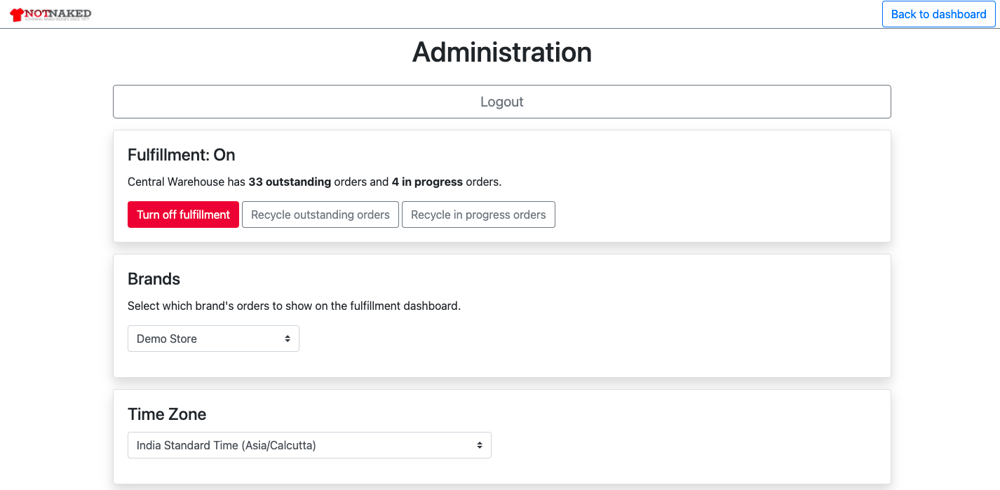
2. Max Order Limit: HotWax Commerce OMS enables retailers to set a “max order limit” for each store to set limits on the number of orders they can fulfill in a day.
When HotWax Commerce OMS runs the brokering engine to route online orders to a store for fulfillment, it checks how many orders have already been assigned to the store on that day. If the number of orders assigned to that store has reached the maximum order limit of that store, the system finds another fulfillment location or store where it can route the order. The next day, the store is again eligible for taking orders.
3. Safety Stock: HotWax Commerce OMS enables retailers to set safety stock for each product in each store. Safety stock is managed at the store level to mitigate the risk of unforeseen circumstances with inventory. “Safety Stock” helps retailers control how much inventory they want to reserve for walk-in customers.
In the HotWax Commerce OMS platform, retailers can set safety stock for each product that the store carries. Once a product’s in-store inventory count hits the safety stock, the remaining inventory will not be available on online channels.
For Example:
At a store location in Brooklyn:
Blue Shirt : 100 Units
Safety Stock : 20 Units
ATP inventory for Online Channels : 100 Units - 20 Units = 80 Units
At a store location in Manhattan:
: 80 Units + 90 Units = 170 Units
The other 30 units (200-170) are now exclusively available for walk-in customers.
Retailers can also exclude products from online sales as needed. When setting safety stock, retailers can adjust the safety stock to a greater number than the stock actually available at the store. The system will honor this inflated number and will not broker any orders for that specific product to the facility.
4. Order Splitting Configuration: HotWax Commerce’s “Split Order” configuration enables retailers to decide if they want to split orders or not. If the Split Order configuration is set to “NO” and an online order has more than one item, the brokering engine looks for a fulfillment location with all items available at a single location. If all items are not found at one location, then the order is back-ordered.In this case, the customer will not get their order items until all the items are available at one location, resulting in a negative customer experience.
By setting split orders to “YES,” the brokering engine looks for a location that carries the maximum order items, routes the eligible order items to that location, and then splits the order and routes the remaining items to another location. In doing so, retailers can automatically meet customer expectations for seamless, fast delivery despite having inventory across multiple locations.
Ship From Store can be complicated, especially without an effective system. As we discussed in this blog, retailers need to consider many factors when launching Ship From Store. An Omnichannel Order Management system can streamline fulfillment, max-order limit, safety stock, and split order considerations in order to optimize Ship From Store initiatives.
* * *
HotWax Commerce OMS provides best-in-class service and solution configurability to meet your unique business needs and scale with your business over time. For retailers of any size, a dynamic omnichannel order management system can help you manage your omnichannel retail strategy and transform your business. If you are interested in learning how our omnichannel solutions can take your business to the next level, contact the HotWax Commerce team for a free consultation today.

